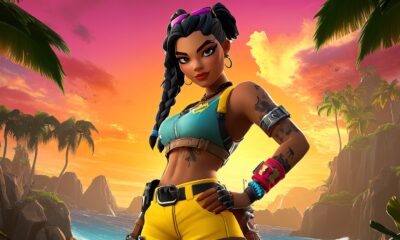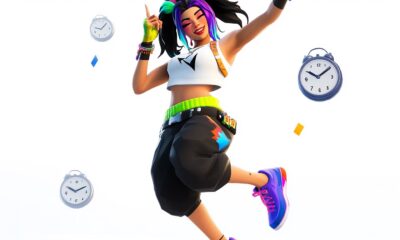All
Effective Strategies to Reduce High Ping in Fortnite
Discover practical methods to lower high ping in Fortnite, enhancing your gaming experience and minimizing lag.
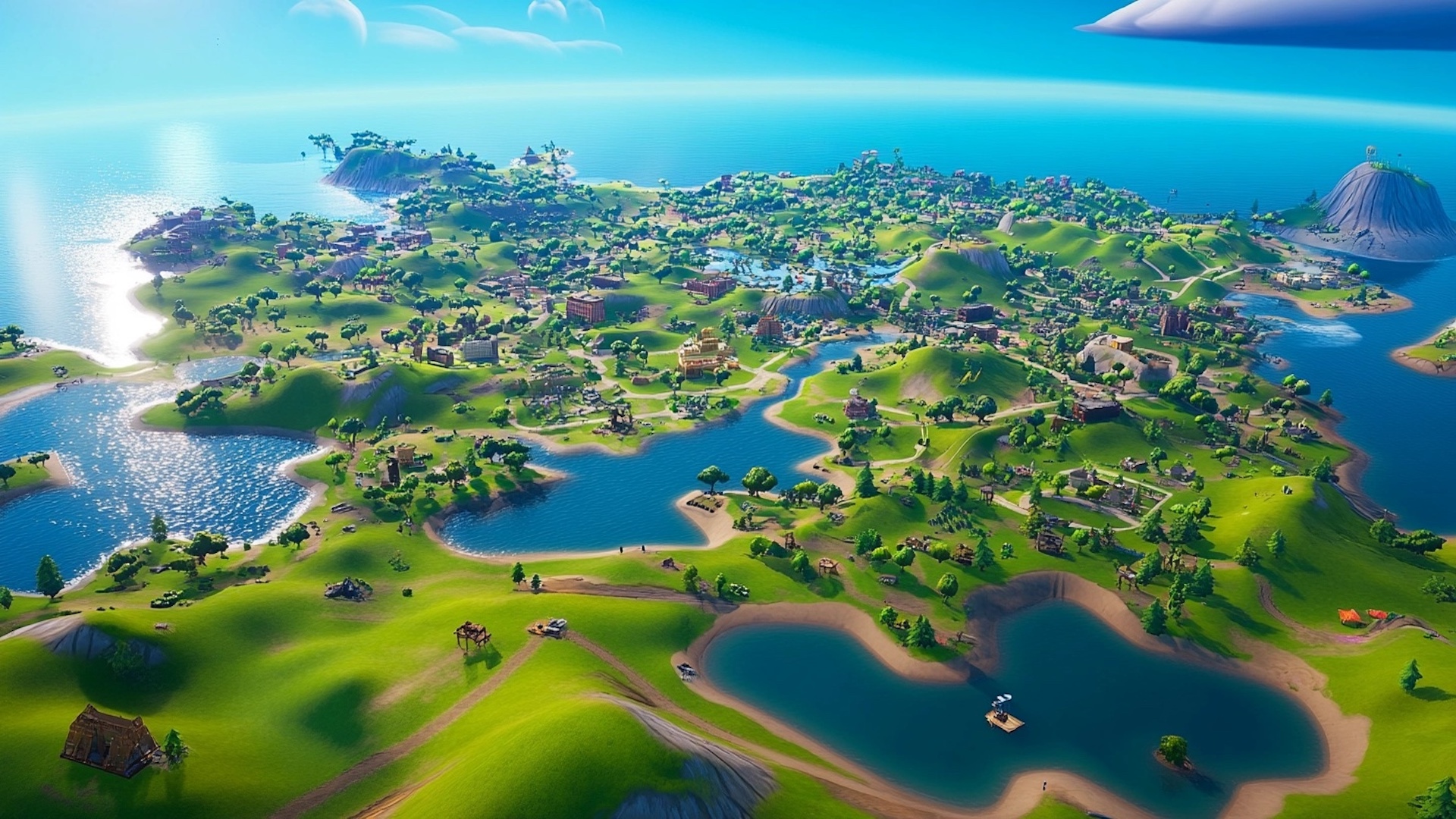
Experiencing high ping in Fortnite can significantly disrupt your gameplay, leading to frustrating lag and input delays. High ping is caused by delays between devices communicating with gaming servers, resulting in input lag and performance issues. Several factors contribute to high ping, including network congestion, physical distance from the server, and hardware limitations. Understanding these causes and applying the right solutions can help restore a smooth gaming experience.
Understanding High Ping in Fortnite
Ping, measured in milliseconds (ms), represents the time it takes for data to travel from your device to the Fortnite servers and back. A lower ping indicates a faster connection, while a higher ping results in noticeable delays during gameplay. Several factors can contribute to high ping, including network congestion, physical distance from the server, and hardware limitations.
Common Causes of High Ping
- Network Congestion: Multiple devices using the same network simultaneously can consume bandwidth, leading to increased ping. (esportsdriven.com)
- Distance from Server: Connecting to a server located far from your geographical location can result in higher ping due to the increased travel time for data. (esportsdriven.com)
- Hardware Limitations: Outdated or low-performance hardware, such as routers and network adapters, can also contribute to high ping. (lagofast.com)
- Background Applications: Programs running in the background, especially those that use the internet, can increase your ping. (drivereasy.com)
Can Your Teammates Affect Your Ping?
Yes, having someone in your game lobby who is connected to a different server or has a poor internet connection can affect your ping.
- Different Server Locations: If one player is connected to a server located far from you (for example, you’re in North America and they’re in Europe), it can increase the overall latency for everyone in the lobby. Fortnite typically tries to match players with servers closest to them geographically to minimize lag. However, if there’s a player on a far-off server or in a region with poor server connectivity, it can cause the game to prioritize that server or struggle to find an optimal connection, resulting in higher ping for everyone involved.
- Bad Connection or “Bar D” Connection: If a player has a poor or unstable internet connection (often represented by a “Bar D” or similar warning), it can cause issues for other players in the lobby as well. A player with a poor connection may experience packet loss or lag spikes, which can create delays in data transmission. Since Fortnite synchronizes all players’ actions in real-time, issues with one player’s connection can have a cascading effect on the others. The game might try to compensate for these issues by increasing the ping for everyone in the lobby, leading to a more frustrating experience for all players.
Effective Solutions to Reduce High Ping
- Use a Wired Connection: Connecting your device directly to the router with an Ethernet cable can provide a more stable and faster connection, reducing ping. (lagofast.com)
- Close Background Applications: Ensure no other applications are consuming bandwidth while you are playing Fortnite. (lagofast.com)
- Update Hardware and Software: Regularly update your router’s firmware and your device’s network drivers to ensure optimal performance. (prosettings.net)
- Select the Appropriate Server: Choose a Fortnite server that is geographically closest to you to minimize latency. (esportsdriven.com)
- Restart Your Network Devices: Rebooting your modem and router can resolve temporary network issues and improve performance. (drivereasy.com)
- Disable Proxy Servers: If you’re using a proxy server, try disabling it as it might contribute to high ping. (drivereasy.com)
- Use a VPN: If you’ve tried all the fixes above but nothing seems to work, consider using a VPN. A paid and reliable VPN usually delivers better and more stable performance during peak hours, improving your overall gaming experience. (drivereasy.com)
When to Seek Professional Assistance for High Ping
If, after implementing these solutions, you continue to experience high ping, it may be beneficial to consult with a professional. Persistent high ping could indicate issues with your Internet Service Provider (ISP) or require advanced troubleshooting.
By understanding the causes of high ping and applying these strategies, you can enhance your Fortnite gaming experience, ensuring smoother and more responsive gameplay.
Helpful Resources:
- Avast Academy: Why Is My Ping So High? How to Reduce Ping & Latency
- Fortnite Support – Epic Games: Understanding latency or ping in Fortnite
- Driver Easy: Fortnite high ping | Quickly & Easily!
- LagoFast: Why is My Ping So High in Fortnite? Causes and Solutions
- Esports Driven: How to Fix High Ping Issues in Fortnite
- Gamers Wiki: Why is my ping on Fortnite so high?
- Fortnite Tracker: Get zero ping in Fortnite (ping optimization guide)
- ProSettings.net: How to Lower Ping in Fortnite
- Valibyte: Fortnite Lag: How to Fix High Ping and Reduce Lag on Fortnite
- Avast Academy: Why Is My Ping So High? How to Reduce Ping & Latency
All
How to Master the Fortnite Discover Algorithm
Learn how the Fortnite Discover algorithm works, including attraction, engagement, and satisfaction metrics. Boost your island’s visibility and success with expert tips.
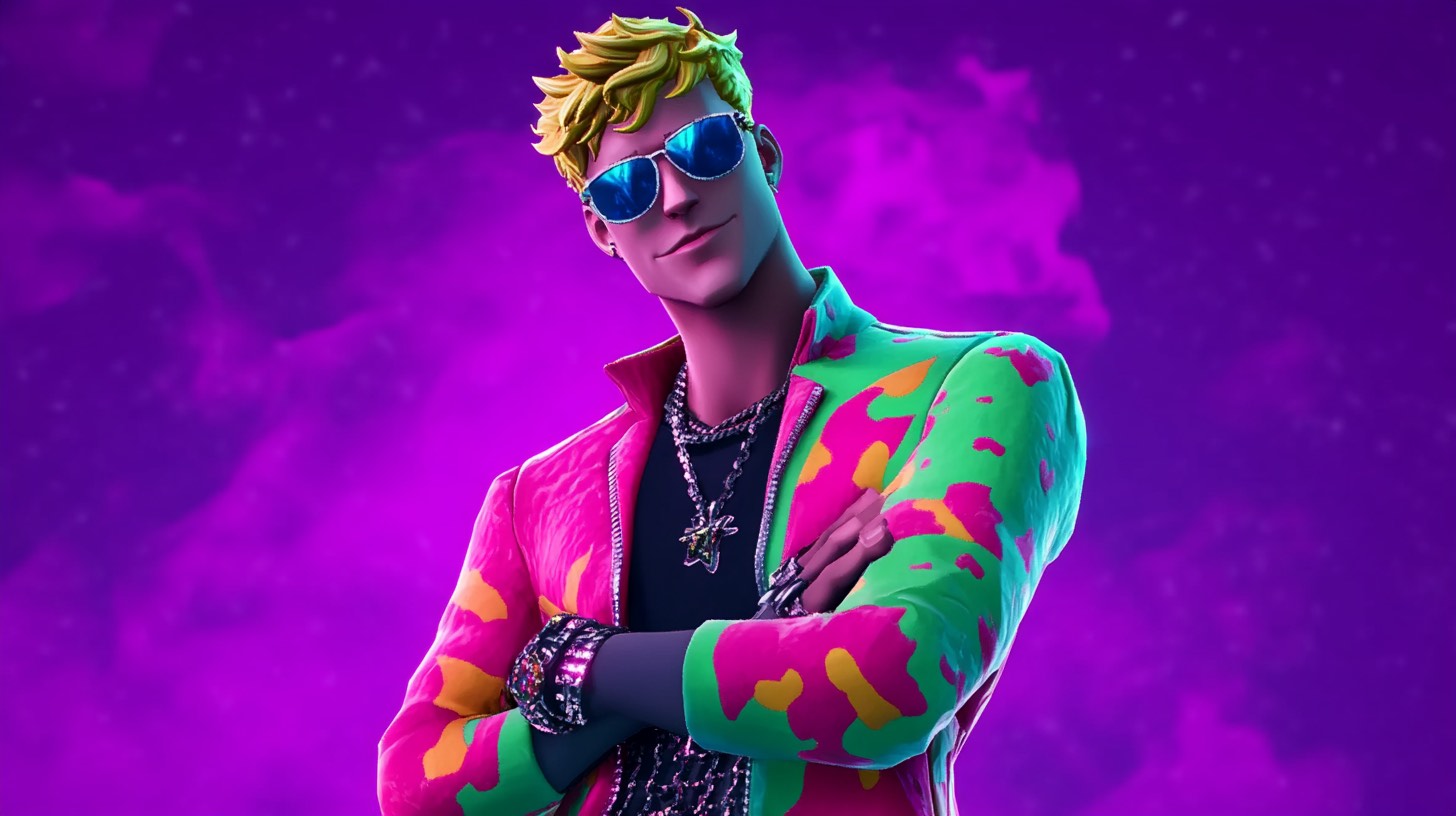
Algorithms in Fortnite Discover
In Fortnite, particularly within Fortnite Creative and UEFN (Unreal Editor for Fortnite), algorithms guide the Discover feature. The Fortnite Discover algorithm uses complex data analysis, machine learning, and behavioral tracking to recommend islands based on player preferences and engagement.
Understanding Algorithms
An algorithm is a structured, step-by-step procedure designed to solve a specific problem or achieve a particular outcome. Algorithms are fundamental to computer science and gaming, underpinning functionalities from matchmaking to content discovery.
Listen in on Spotify
Fortnite Discover Metrics
How Attraction is Measured
Attraction in Fortnite Creative involves multiple key metrics:
- Unique players per impression over 96 hours: Evaluates how effectively initial views translate into sustained player engagement.
- Clicks per impression (CTR): Indicates how effective your thumbnails and titles are in capturing player interest.
- Minutes played per impression: Assesses whether impressions result in prolonged gameplay sessions.
- Early session drop-off rate: Percentage of players who leave within the first two, five, or ten minutes of gameplay, highlighting retention effectiveness early on.
How Engagement is Measured:
Key metrics driving engagement include:
Social play: Tracks gameplay time within social groups, excluding idle periods (no input for sixty seconds). Average session length also contributes significantly.
- Minutes per player (over a 96-hour period): Reflects the average playtime per player.
- Day 1 (D1) retention: Percentage of players returning the day after their initial session.
- Day 7 (D7) retention: Percentage of players returning one week after their initial session.
- Unique players over 96 hours: Measures the diversity and breadth of player interaction.
Key Components of Fortnite Discover Algorithm
Discover Score
Calculated via a modified z-score, the Discover Score evaluates islands based on three primary metrics:
- Attraction: Measures the island’s ability to capture players’ attention initially. Key factors include click-through rates (CTR), minutes played per impression, and player retention early in sessions.
- Engagement: Evaluates how well the island retains players over time. Metrics include average session duration, day 1 and day 7 retention, and the number of unique players.
- Satisfaction: Reflects qualitative player feedback, such as ratings, endorsements (favorites, recommendations), and responses from post-match surveys.
Sophistication Score
This score highlights islands that demonstrate higher complexity and creativity, factoring in the development effort, use of advanced features like custom scripting (Verse), animations, and unique textures.
Island Embedding Framework
Standardizes data like titles, tags, descriptions, and gameplay metrics into numerical representations to facilitate personalized recommendations based on player interests and behavior.
Machine Learning Models or Artificial Intelligence used in Fortnite Discover
Fortnite utilizes several recommendation models:
- Item-based: Suggests islands similar to ones recently played.
- User-based: Recommends islands aligning with a player’s historical gameplay preferences.
- Sequencing-based: Predicts the next island a player might enjoy based on their play history.
Tips for Becoming a Master of the Fortnite Discover Algorithm:
- Improve Attraction:
- Focus on click-through rate (CTR) by designing eye-catching thumbnails and compelling titles. Test different thumbnails with A/B testing to find the most engaging designs.
- Ensure that your island description is clear and intriguing, highlighting the core experience players will have. Use relevant tags to categorize your island correctly.
- Increase Engagement:
- Maximize minutes per player by designing gameplay that keeps players engaged. Provide meaningful progression, rewards, or challenges that motivate players to keep playing.
- Focus on retention by offering a rewarding experience that encourages players to return. Consider introducing new content or features periodically.
- Analyze engagement data to understand where players tend to leave your island and make adjustments to reduce early drop-off.
- Boost Satisfaction:
- Focus on creating a fun and high-quality experience. Gather feedback from players through surveys and direct feedback, and use this to refine your island.
- Encourage players to favorite or recommend your island by making it more shareable and enjoyable. Respond to player feedback and make improvements based on their suggestions.
- Enhance Sophistication:
- Incorporate advanced features such as custom scripting (Verse code), animations, and more complex game mechanics that demonstrate technical skill and creativity.
- Use innovative design techniques and unique content to stand out from the crowd and increase your Sophistication Score.
- Utilize Analytics:
- Regularly review your analytics (such as retention rates, minutes played, and CTR) to understand how players are interacting with your island. Use this data to inform changes and improve player experience.
- Keep an eye on the Insights Dashboard and use the feedback from the Creator Portal to fine-tune your island’s performance.
- Iterate Continuously:
- Keep updating your island after launch based on player feedback and changing trends. Fortnite’s ecosystem evolves, and so should your island to remain relevant and engaging.
- Test new features and keep an eye on community feedback. Islands that continuously improve tend to rank better in Discover.
By focusing on these metrics and best practices, you can work with the algorithm rather than against it, optimizing your island’s visibility and ensuring that it appeals to the largest audience possible.
Planning is Key in Order to Master the Fortnite Discover Algorithm
In our recent article on creating an effective marketing plan, we explored key strategies tailored for general marketing success. Now, let’s delve into how you can adapt those principles specifically to master the Fortnite Discover Algorithm.
Here’s a concise example illustrating some actions you can take to master the Discover Algorithm. Feel free to utilize our practical template or use the download link below to edit the template:
Fortnite Discover Action Item Plan Example
| Action Item | Objective | Timeline | Metrics to Track | Responsible Party | Tools/Resources |
|---|---|---|---|---|---|
| Improve Thumbnail & Title Design | Make your island visually appealing to attract clicks | Ongoing, update regularly | Click-through rate (CTR), Impressions | Marketing Team | Photoshop, Canva, or other design tools |
| A/B Test Thumbnails | Test various thumbnails to see which attracts more clicks | Test every 1-2 weeks | CTR, player feedback on thumbnails | Marketing & Design Team | A/B Testing Tools, Photoshop |
| Optimize Island Description & Tags | Make sure your island’s details are engaging and relevant | Update regularly based on player behavior | Player engagement, click-through rates | Content Creation Team | UEFN (Unreal Editor for Fortnite), Creator Portal |
| Increase Engagement (e.g., gameplay improvements) | Engage players by making gameplay fun and interactive | Ongoing, track and adjust gameplay | Minutes per player, Day 1 and Day 7 retention | Game Design Team | UEFN, Player Feedback Tools |
| Focus on Retention (e.g., rewards, progression) | Ensure players are motivated to come back by adding progression and rewards | Ongoing, track player retention | Retention rates, player feedback on rewards | Game Design & Progression Team | Analytics Dashboard, In-Game Feedback |
| Analyze Engagement Data for Drop-off Points | Identify where players drop off and improve those areas | Ongoing, adjust based on insights | Player drop-off points, time spent in-game | Analytics Team | Analytics Dashboard, User Flow Data |
| Encourage Player Feedback (e.g., surveys, direct feedback) | Collect feedback to improve the overall player experience | Ongoing, collect feedback at regular intervals | Survey responses, endorsement rate | Community Management Team | Surveys, Creator Portal |
| Monitor Endorsements & Recommendations | Boost player satisfaction by encouraging positive interactions | Ongoing, track player behavior | Favorites, recommendations, survey feedback | Community & Marketing Team | Creator Portal, Community Tools |
| Enhance Island Sophistication (Advanced Features) | Develop a more complex, polished island with custom code and advanced features | Ongoing, add complexity after each major update | Sophistication score, features used | Development Team | UEFN, Verse code, Animation Tools |
| Regular Updates & Iterations (based on player feedback) | Keep your island fresh with updates based on analytics and feedback | Ongoing, update your island every 2-4 weeks | Player return rate, satisfaction survey feedback | Content Creation & Game Design Teams | Analytics Dashboard, Player Feedback |
| Utilize Creator Portal Analytics | Analyze the data to understand what works and what doesn’t | Review analytics every week | Analytics Dashboard, player engagement metrics | Analytics & Development Teams | Creator Portal, Analytics Dashboard |
| Incorporate Advanced Devices & Verse Code | Improve sophistication with custom devices and code | Integrate new features every month | Sophistication score, custom features used | Development Team | UEFN, Verse code, Development Tools |
| Increase Player Interaction (e.g., multiplayer, social play) | Make your island more social and interactive to increase playtime | Ongoing, introduce social aspects into gameplay | Social playtime, multiplayer usage | Game Design & Community Management Team | Social Play Tools, Community Interaction |
| Optimize for High Playtime per Impression | Increase the time spent playing through engaging content | Ongoing, update and iterate to increase engagement | Minutes per impression, retention | Game Design Team | UEFN, Analytics Dashboard |
⬇️ Download the Full Fortnite Discover Action Item Plan Template (Google Sheets)
Build with Us!
Every other week we have a tutorial challenge! Challenge yourself, learn something new and build with us! Join our Discord Community to share your voice and connect with fellow UEFN and Fortnite Creative developers.
All
How to Craft a Winning Fortnite Creative & UEFN Marketing Action Plan (Free Template)
Build hype and potentially boost Discover tab rankings for your Fortnite Creative or UEFN project with our step-by-step marketing plan, tool comparison, and free template.
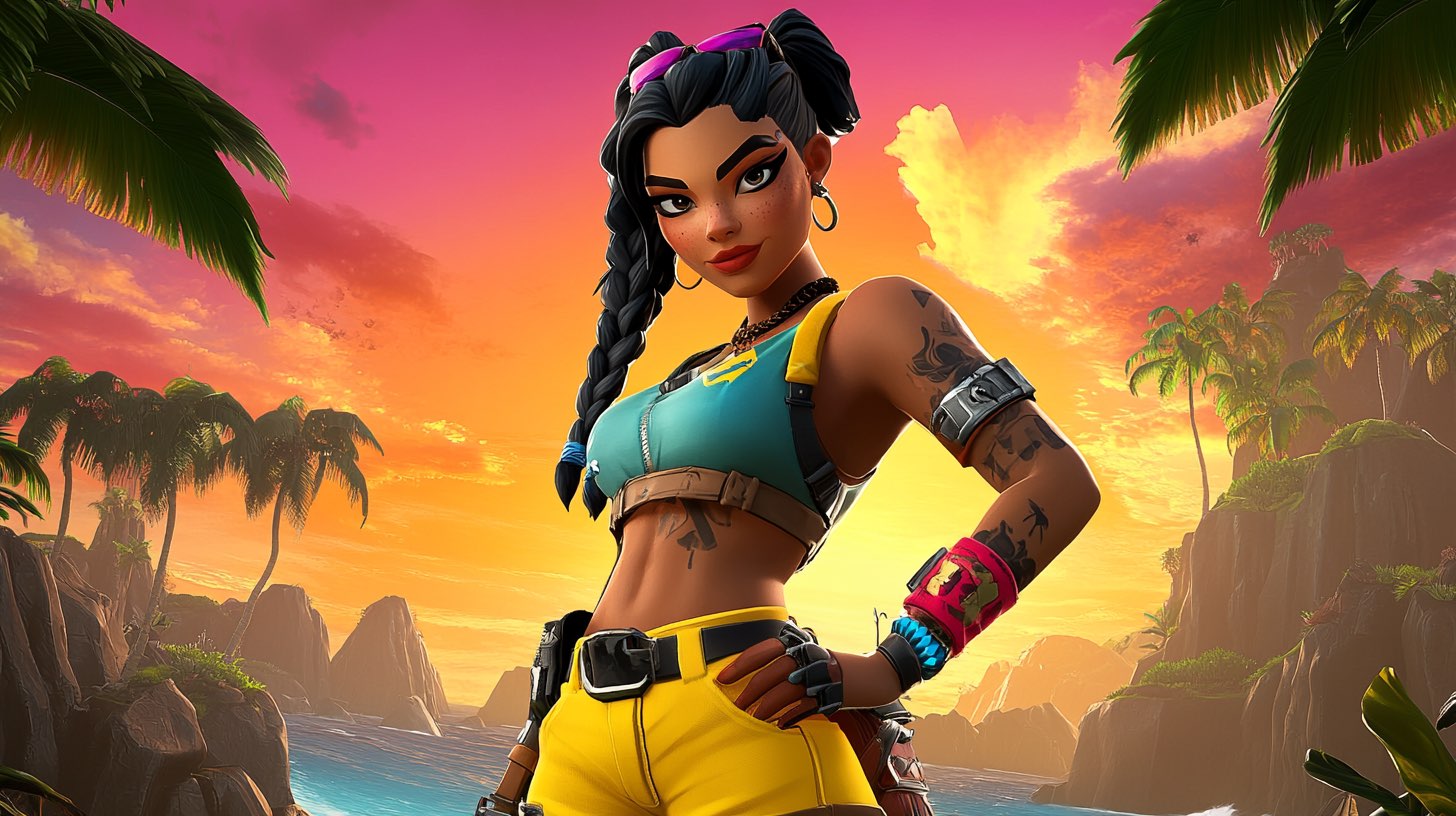
Launching a Fortnite Creative or Unreal Editor for Fortnite (UEFN) project isn’t just about great gameplay—it’s about getting players to discover, play, and stay. A structured marketing plan turns that vision into repeatable actions, so each phase—from pre‑launch hype to long‑term engagement—fires on all cylinders.
What Is a Marketing Plan?
A marketing plan is a documented roadmap that defines who you want to reach, what you’ll say, where and when you’ll say it, and how you’ll measure success. For Fortnite creators, it bridges the gap between building the map and filling it with players.
Why It Matters
- Clarity & Focus – Keeps your team aligned on goals and tasks.
- Resource Efficiency – Prevents wasted ad spend and duplicated work.
- Measurable Growth – Establishes KPIs so you can pivot quickly if numbers dip.
- Competitive Edge – Few community creations use a formal plan—doing so gives you a leg up in discoverability.
Key Benefits for Fortnite Creative & UEFN
- Epic Discoverability Boost – A plan maximizes algorithmic placement in Fortnite’s “Discover” tab.
- Stronger Collabs – Clear milestones help you pitch YouTubers or other map makers.
- Retention & Monetization – Ongoing content beats the Day‑1 spike; a plan maps out those beats.
- Discover Tab Optimization – Tailor your map description, genre tags, and thumbnail art to secure higher placement in Fortnite’s in‑game Discover feed.
10‑Step Framework to Build Your Plan
Below is a proven workflow. Each step includes practical task ideas you can drop straight into a project‑management board.
| # | Phase | Goal | Example Tasks |
|---|---|---|---|
| 1 | Research & Targeting | Identify ideal player persona | – Survey Reddit/Discord – Analyze top genre maps |
| 2 | Pre‑Launch Setup | Ready assets & channels | – Build trailer storyboard – Claim socials & custom URL |
| 3 | Hype Teasers | Generate curiosity | – Post WIP screenshots weekly – Run closed beta sign‑ups |
| 4 | Collaboration Outreach | Secure partners, Get Sponsors | – DM five Fortnite creators – Offer exclusive early access |
| 5 | Discovery Optimization | Boost in‑game visibility | – Craft SEO‑rich map description – Select trending tags |
| 6 | Launch Day | Maximize first‑day impact | – Publish launch trailer – Host Twitch reveal stream |
| 7 | Engagement Push | Keep players active | – Add timed challenges – Reply to feedback on socials |
| 8 | Content Updates | Sustain interest | – Schedule bi‑weekly LTMs – Tease Season 2 roadmap |
| 9 | Feedback Loop | Improve & iterate | – Send post‑match survey – Track session length metrics |
| 10 | Long‑Term Visibility | Maintain relevance | – Cross‑promote with new collabs – Run seasonal events |
🎯 Tip: Assign each task an owner, due date, and Key Performance Indicators also known as KPI’s (e.g., trailer views, unique players, 30‑day retention).
Best Tools to Manage Your Marketing Plan
Using a project‑management platform keeps all those moving parts on rails. Here are three battle‑tested options:
1. Asana.com
- Timeline View for visualizing the entire launch cadence.
- Built‑in Goals feature to align KPIs like “10k players in first week.”
- Robust automation rules to trigger reminders when tasks fall behind.
- Prices: $0-$24.99
2. Notion.com
- Flexible database templates—combine tasks, calendars, asset libraries in one page.
- Real‑time docs for brainstorming map lore and social‑copy drafts.
- Community templates (many free!) tailored to game dev pipelines.
- Prices: $0-24.00
3. Trello.com
- Simple Kanban boards—great for small teams. Used by Epic.
- Power‑Ups like Calendar or Card Aging for visual urgency.
- Mobile‑friendly drag‑and‑drop makes on‑the‑go updates painless.
- Prices: $0-$10.00
🔗 Each link opens in a new tab so you can compare features while following this guide.
Quick‑Start Marketing Plan Template (Example)
Below is a mini‑snapshot of a marketing plan template framework. Copy it into Asana, Notion, or Trello—or grab the full TCB template download below.
| Phase | Task | Owner | Due | KPI |
|---|---|---|---|---|
| Pre‑Launch | Finalize key art & screenshots | Designer | 2 weeks before launch | 6 hero images |
| Hype | Schedule teaser posts | Social Lead | 10 days before launch | 3 posts scheduled |
| Launch | Publish map code on socials | Community Mgr | Launch Day | 1,000 clicks |
| Post‑Launch | Collect feedback via Google Form | QA Lead | +3 days | 100 responses |
⬇️ Download the full Fortnite Creative Marketing Plan Template (Google Sheets)
Dive into Action
Ready to turn your Creative island or UEFN masterpiece into the next breakout hit? Grab our free template above, drop it into your favorite tool, and start assigning and creating tasks today. Your future players are waiting—so let’s get building!
💡 Pro Tip: Bookmark this guide and revisit it after each update cycle; the most successful creators treat marketing as an ongoing sprint, not a one‑off event.
Build with Us!
Every other week we have a tutorial challenge! Challenge yourself, learn something new and build with us! Join our Discord Community to share your voice and connect with fellow UEFN and Fortnite Creative developers.
All
UEFN Scams: How Epic Games Is Tackling Fraud, IP Theft, and Moderation in Fortnite Creative
Dive into the world of UEFN Scams—fake rewards, map theft, and more—and learn how Epic’s moderation process, best practices, and reporting tools can help you protect your Fortnite Creative projects.

Fortnite Creative’s Unreal Editor for Fortnite (UEFN) has unlocked a playground for ambitious creators, but with that freedom comes a host of UEFN scams targeting both novice and veteran map builders. From “free V‑Bucks” traps to stealthy map theft and false DMCA strikes, understanding these pitfalls—and how Epic’s mixed human‑and‑AI moderation works—helps you stay one step ahead.
Why UEFN Scams Matter: Scams not only erode player trust but can derail your creative momentum, damage reputation, and even jeopardize monetization through the Support‑A‑Creator program.
Human-and-Machine Moderation: Epic’s Frontline Defense on UEFN Scams
Epic reviews roughly 4,000 island submissions daily, aiming for a three‑hour turnaround. They blend automated triage with in‑depth human checks to balance scale and accuracy:
- Automated Triage: Machine‑learning flags uploads for stolen assets, malicious code, or suspicious metadata, prioritizing high‑risk maps.
- Human Playthroughs: Regardless of flags, each island is played for 10–15 minutes by a moderator who checks for misleading prompts (e.g., “like for rewards”), broken assets, and IP infringements.
- Ongoing Calibration: Moderators follow clear reference guides and undergo retraining. Epic tracks consistency metrics, though subjective judgments (like proximity of “favorite” prompts to in‑map rewards) can vary.
- Enhanced Feedback: Epic plans richer rejection notes—screenshots of violations and contextual explanations—to empower creators to iterate without guesswork.
Deep Dive: UEFN Scams and Creative Exploits
🎙️ Listen to our podcast: Tune into our Deep Dive podcast for in-depth review of what UEFN Scams are and how they impact the UEFN and Fortnite Creative Community:
Anatomy of UEFN Scams
Awareness is your first line of defense. Here are the top scam archetypes:
- Fake Rewards & Click‑bait: Deceptive “free V‑Bucks” machines or overlay graphics promise goodies for likes/favorites, then vanish once off‑platform engagement is collected.
- Map Theft & Unauthorized Resells: Scammers extract
.umapfiles, rebrand, and re‑upload popular maps under the same name/thumbnail—sometimes even charging Support‑A‑Creator fees. - Commission & Tutorial Code Scams: Fraudsters offer custom thumbnails or scripts for payment, only to disappear—while others repurpose freely published tutorial code as “premium” paid content.
- False DMCA Claims: Competitors file bogus copyright takedowns, stalling genuine creators’ momentum. Epic reviews DMCA by hand but false removals still occur.
- Malicious UEFN Assets: Hidden scripts in poorly vetted community assets can access local files or inject unwanted code into your project.
- Misleading Off‑Platform Promotion: Promos on social media with unfulfilled promises—like “get free Battle Pass”—can draw players into scammy maps.
Get More Insight with EPIC Finally Addresses Moderation in Fortnite Creative
A few key points were emphasized by Epic in the video: “EPIC Finally Addresses Moderation in Fortnite Creative” by HowtoBoss : that every island published undergoes a human review, despite the use of automated systems and machine learning to assist and prioritize content. The discussion also covers topics like the high volume of daily island submissions (around 4,000), the goal of a three-hour review turnaround time, and the challenges of maintaining consistency among moderators and communicating rule violations clearly to creators, particularly regarding subjective areas like misleading content. Finally, they touch on Epic’s stance on AI-generated content (focusing on compliance rather than the tool used) and IP theft (relying on rights holders for proactive moderation), while also hinting at upcoming moderation features to improve clarity and predictability for creators.
Best Practices to Guard Against UEFN Scams
- Use Original Thumbnails & Assets: Design your own visuals or source from Epic’s marketplace. Embed subtle watermarks or version tags in
.umapmetadata to prove ownership. - Clear, Truthful Promotion: Link directly to your live island; avoid click‑bait promises. Overpromising damages trust and may trigger moderation flags.
- Version Control & Backups: Implement a Git‑style workflow or cloud backups. If a map is wrongfully removed, you’ll have a secure copy ready for rapid resubmission.
- Community Verification: Recruit trusted playtesters for honest feedback. Genuine testimonials are powerful trust signals.
- Strict Asset Vetting: Inspect community assets—reject any with unexpected file types (.exe, .dll) or unverified scripts. When in doubt, sandbox new packages.
Reporting, Enforcement, and Recovery to Prevent UEFN Scams
- In‑Game Reporting: Flag suspect islands or assets via the UEFN interface or Creator Portal.
- Formal Appeals: If mis‑DMCA’d, gather timestamps, original source files, and URLs—then file an informed appeal through Epic’s DMCA system.
- Repeat Offender Program: Epic issues demonetization, publishing bans, and account suspensions for habitually bad actors, though compliant maps from banned creators may remain live.
- Momentum Recovery: Post patch notes, community updates, and gameplay highlights on social channels to regain traction after a hold or wrongful takedown.
Balancing Creativity and Compliance
Epic continues experimenting with features like publishing holds (iterative feedback loops) and duplicate‑thumbnail detection to clamp down on UEFN scams without curbing innovation. Striking that balance is an ongoing process—clearer guidelines help, but too many explicit rules risk stifling the creative spirit that defines Fortnite Creative.
Frequently Asked Questions (FAQ)
Q1: How can I verify an asset’s safety before importing?
A: Always download from Epic’s official marketplace or reputable hubs. Scan new packages for unrecognized file types or scripts, and consider sandbox testing in an isolated project.
Q2: What exactly counts as a false DMCA claim?
A: A takedown notice filed without legitimate IP ownership—often by copycats. Keep original .umap files, timestamps, and source records to substantiate your appeal.
Q3: Can I use AI‑generated art for thumbnails?
A: Yes, provided it doesn’t infringe on existing IP or mislead players. Focus on unique compositions and avoid overused stock motifs.
Q4: Why do some compliant maps from banned creators stay live?
A: Epic avoids penalizing players enjoying valid content. They revoke publishing and earning rights but may leave compliant islands discoverable to preserve community access.
Q5: How do I request more detailed feedback on a moderation decision?
A: Epic is rolling out enhanced feedback tools (screenshots, comments). Meanwhile, submit a support ticket via the Creator Portal with specific questions about your rejection.
Fight Against UEFN Scams: Next Steps
The fight against UEFN scams is ongoing, but by understanding Epic’s moderation blend, recognizing common scam vectors, and adopting proactive safeguards, you can protect your creations and foster trust with your audience. By staying vigilant, transparent, and working together, we can keep the FNC and UEFN Creative Community a thriving, secure environment for everyone.
-

 Featured4 months ago
Featured4 months agoThe Ultimate UEFN Guide (2025) – Unreal Editor for Fortnite Explained
-

 All8 months ago
All8 months agoGame Development Grants to Boost Your Project in 2025
-
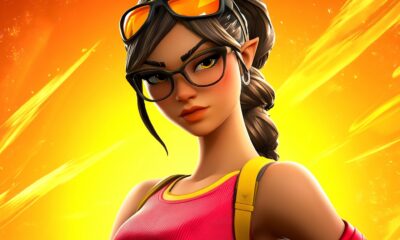
 All3 months ago
All3 months agoHow to Join the Fortnite Island Creator Program (Step-by-Step Guide)
-
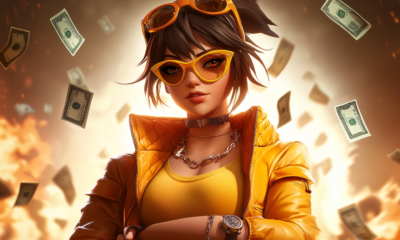
 All4 months ago
All4 months agoUEFN Monetization Guide: How to Make Money with Unreal Editor for Fortnite
-

 All4 months ago
All4 months agoUnity 2025 Roadmap: Massive Performance Gains, Multiplayer Evolution & AI-Powered Creation
-

 All4 months ago
All4 months agoQuick Look at the UEFN Fortnite Creator Trello Roadmap: Key Updates and Community Impact
-

 All6 months ago
All6 months agoEngagement Payout Estimates Now Available in Fortnite Creator Portal
-

 All4 months ago
All4 months agoNew Content & Interview Policy: What Contributors and Readers Need to Know

